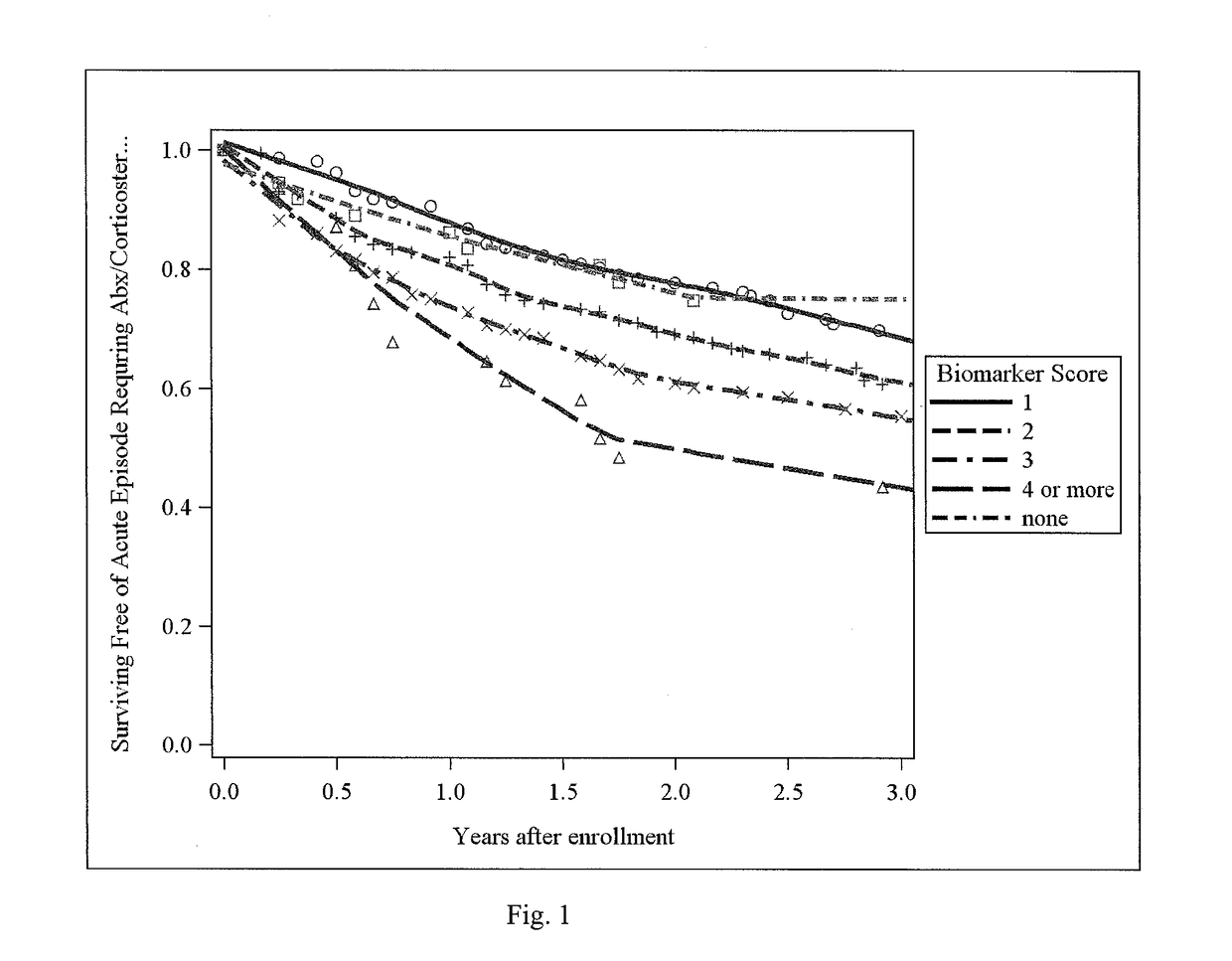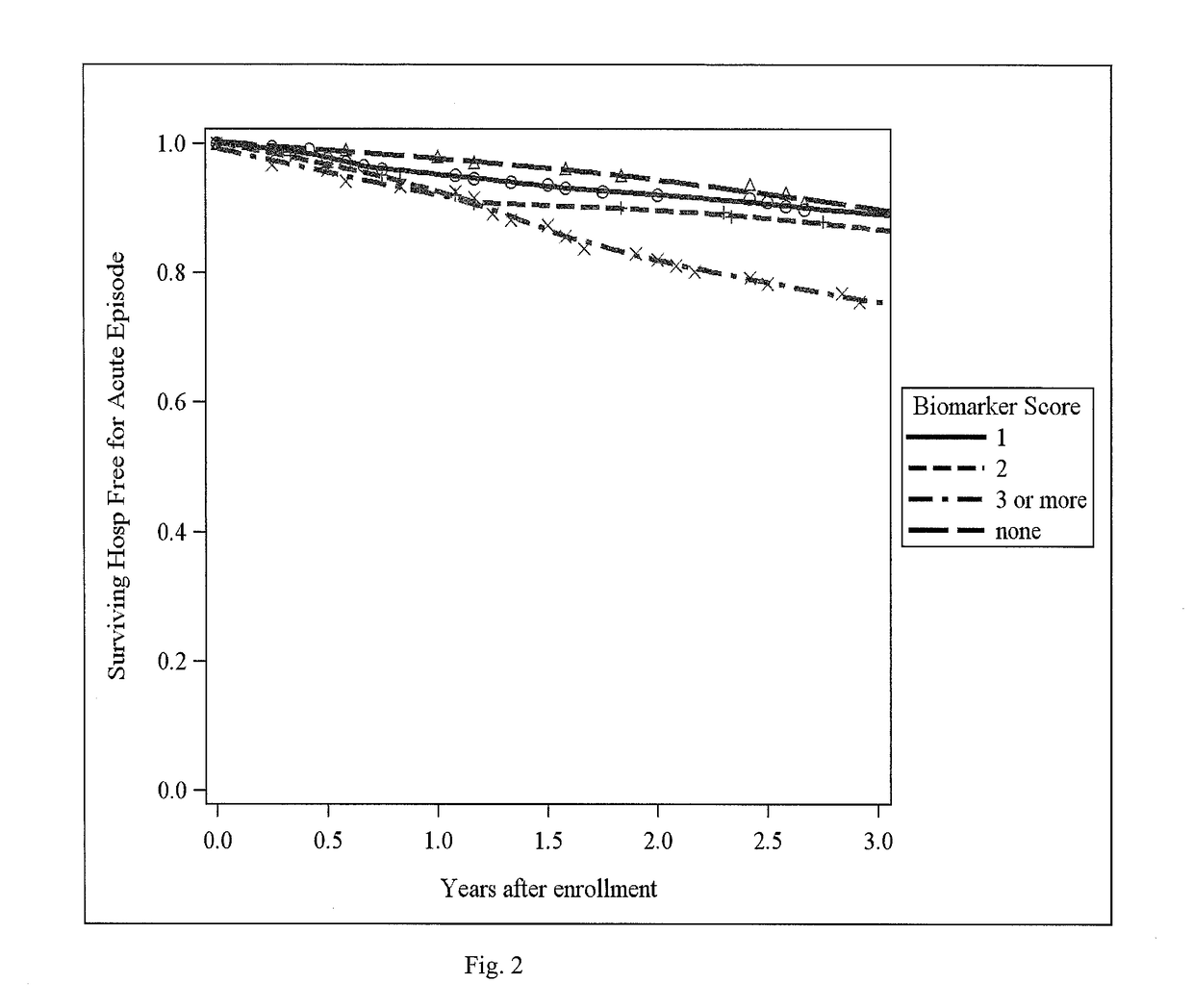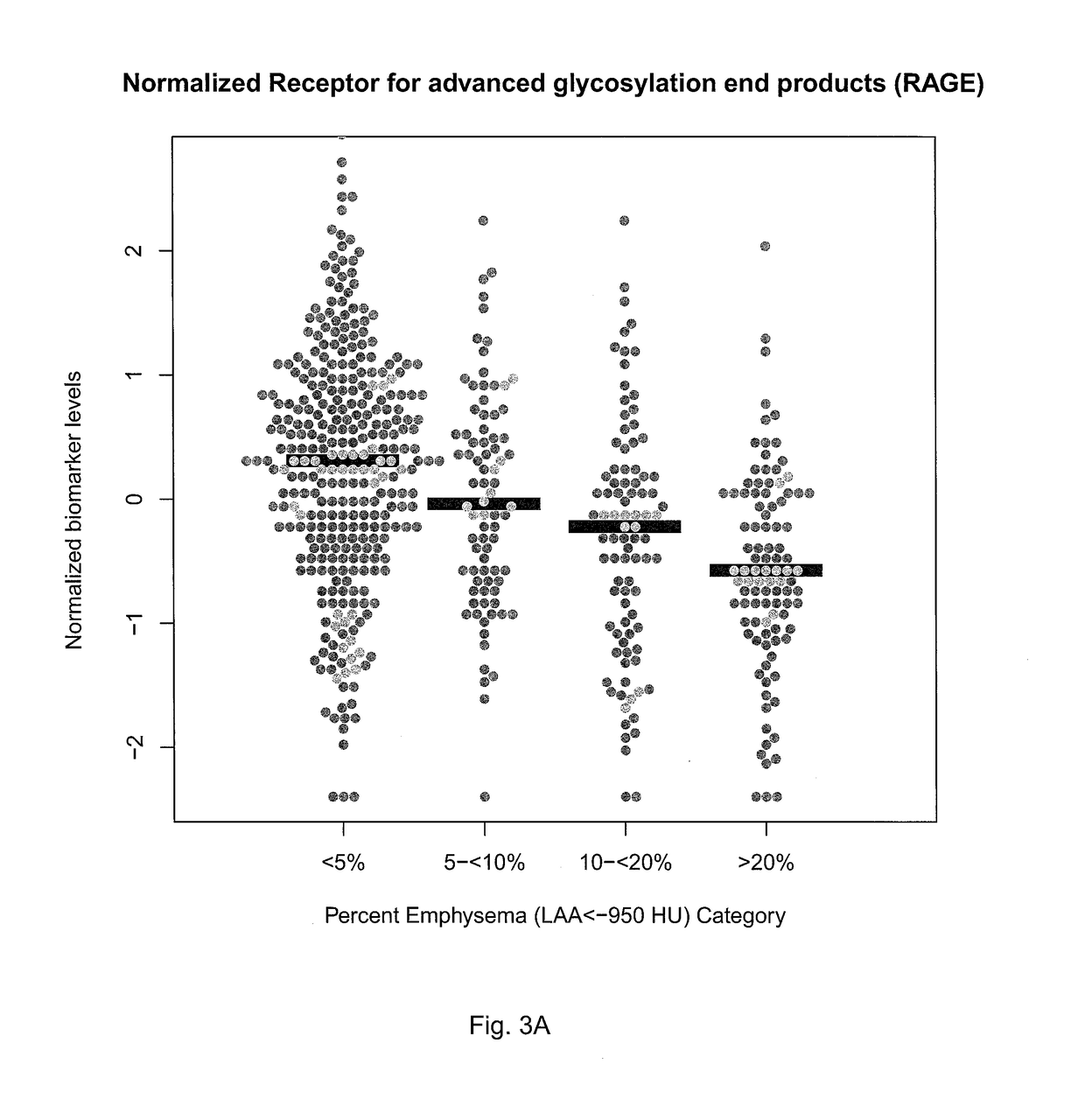Methods for detection of respiratory diseases
a respiratory disease and detection method technology, applied in the field of respiratory diseases, can solve the problems of increased mortality, limited study, and limited studies
- Summary
- Abstract
- Description
- Claims
- Application Information
AI Technical Summary
Problems solved by technology
Method used
Image
Examples
example 1
Study Population
[0056]Study participants provided written informed consent. At the time of enrollment, all subjects were 45-80 years old, had a history of smoking at least 10 pack-years, and had not had an acute respiratory exacerbation for at least 30 days prior to enrollment. 1958 of these subjects from 5 clinical centers participated in an ancillary study in which they provided baseline fresh frozen plasma collected using a p100 tube (BD) (Carolan, B. J., et al. The association of adiponectin with computed tomography phenotypes in chronic obstructive pulmonary disease. Am J Respir Crit Care Med 188, 561-566 (2013)); 1350 of these subjects met all of the following criteria: they were from two sites, were non-Hispanic White (NHW) and actively participated in a longitudinal follow up study (describe in Regan E. A., et al. Genetic epidemiology of COPD (COPDGene) study design. COPD 7, 32-43 (2010)). From this group, 602 subjects with and without COPD were matched for gender and smokin...
example 2
[0071]This example shows that there is a biomarker signature of emphysema in peripheral blood that can provide information about the presence and distribution of emphysema in chronic obstructive pulmonary disease (COPD).
[0072]COPD is a phenotypically heterogeneous disease. In COPD, the presence of emphysema phenotype is associated with increased mortality and increased risk of lung cancer and its distribution has implications for treatments. High resolution computed tomography (HRCT) chest scans are useful in characterizing the extent and distribution of emphysema but increase cost and raise concerns about radiation exposure. Systemic biomarkers may provide additional information in differentiating COPD phenotypes. Methods: 114 plasma biomarkers were measured using a custom assay in 588 individuals enrolled in the COPDGene study. Quantitative emphysema measurements included percent low lung attenuation (% LAA)≤-950 HU, ≤-910 HU and mean lung attenuation at the 15th percentile on lun...
PUM
| Property | Measurement | Unit |
|---|---|---|
| size | aaaaa | aaaaa |
| CT | aaaaa | aaaaa |
| Intracellular adhesion molecule 1 | aaaaa | aaaaa |
Abstract
Description
Claims
Application Information
 Login to View More
Login to View More - R&D
- Intellectual Property
- Life Sciences
- Materials
- Tech Scout
- Unparalleled Data Quality
- Higher Quality Content
- 60% Fewer Hallucinations
Browse by: Latest US Patents, China's latest patents, Technical Efficacy Thesaurus, Application Domain, Technology Topic, Popular Technical Reports.
© 2025 PatSnap. All rights reserved.Legal|Privacy policy|Modern Slavery Act Transparency Statement|Sitemap|About US| Contact US: help@patsnap.com



